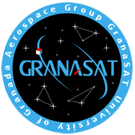Meet the members of our Strawberry Team from Summer Camp 2018

Members of the Strawberry Team: Eloy Prieto Panadero and Álvaro Díaz Carmona.
OBJECTIVES
The aim of this group is to simulate a Sun-Synchronous Orbit using STK through a MATLAB connection.
The project
A Sun Synchronous Orbit (SSO) is that where a satellite passes over a certain latitude at the same local mean time (since the mean sun is different to the apparent sun, the relative position of the sun and the satellite may change).
Rotation of the Earth
SSO are nearly polar orbits, with inclination close to 90º, and they are also retrograde, that is, inclination is somewhat greater than 90º. SSO orbits have their altitude bounded to the inclination, thus finding a suitable inclination for a LEO orbit so that it is sun-synchronous is one of the main goals here.
Dawn-Dusk orbits are SSO where the satellite passes over the Equator at 6:00 and 18:00. This means ground orbit (the projection of the orbit on the Earth’s surface) matches the limit between day and night – the ‘terminator’.
Dawn-Dusk Sun System
-Detailed objectives
Using the orbit simulator Systems Tool Kit (STK) Sun-Synchronous Orbits can be studied by tuning the parameters manually; however, it would be much more useful having this done automatically by a program. Regarding this issue, the Raspberry team also aims to use the STK-MATLAB connection plugins so that the orbit can be created just by inputting some numbers on a TXT file. Also, a MATLAB program could be used to simulate the satellite’s propagation through data sent by incorporated sensors inside the device.

Satellite with a sensor
On another line of investigation, the satellite has a cylindrical magnet inside, which causes a magnetic field. Knowing the magnetic field, the magnetization of the magnet can be calculated by using a dipole approximation. Calculus will be carried out on MathCAD, a text processor enhanced to make mathematical operations such as derivatives, integrals, vector and matrices operations, Boolean equations… MathCAD can either operate numerically or analytically so, theoretical models can be studied and then applied to desired values.
-Research and achievements
Satellite implementation on STK: Following the steps on this guide we implemented the Cubesat model from Blender on STK.

Cubesat model in STK
Satellite propagation: Using the STK interface we have been able to simulate dawn dusk orbits for the Cubesat. Energy flow received by the solar panels is seen on the following graphics.
Power received during a year
MathCAD training: as a starting exercise, the magnetic field of a flat sheet carrying a certain current was calculated through the magnetic field of a wire.
Magnetic momentum: By dipole approximation, magnetic field of a magnet is related to its momentum in two different situations.
Presentation of the Strawberry Team weekly work: Strawberry_Team






